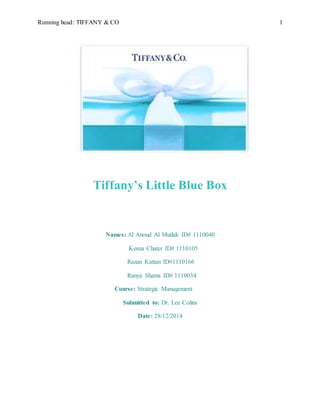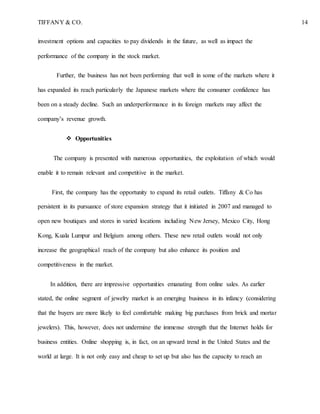This document provides an analysis of Tiffany & Co's business strategies and the jewelry industry. It discusses macroeconomic factors affecting the industry, Porter's five forces analysis of competitive forces, and key success factors. Tiffany & Co's strategies, SWOT analysis, and financial performance are examined. Issues and recommendations are provided.




















